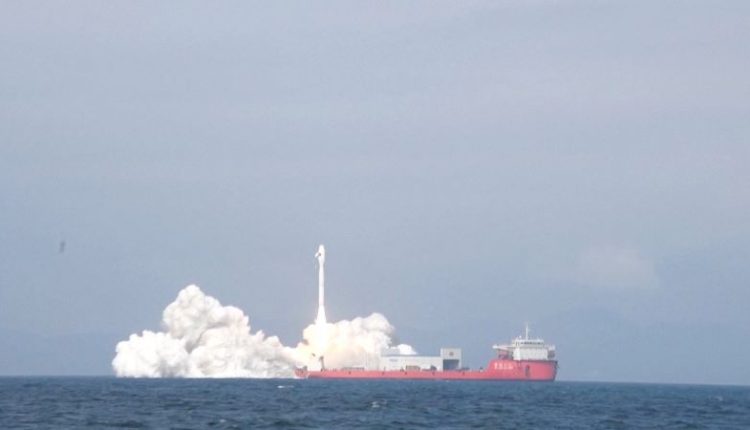
China launches world’s first in-orbit AI commercial hypersatellite
China’s Taiyuan Satellite Centre has successfully launched the world’s first in-orbit commercial hypersatellite, propelled by artificial intelligence (AI).
The event took place on Saturday, with the launch taking off from the waters off the coast of Yangjiang City in Guangdong Province, situated in southern China.
At 11:06 a.m. (Beijing Time), a Smart Dragon-3 (SD-3) carrier rocket successfully launched from the site, deploying a cluster of nine satellites into their designated orbits. This ensemble included the in-orbit AI commercial hypersatellite and a distant retrograde orbit (DRO) satellite.
Furthermore, during the mission, the SD-03 also placed the Egyptian NExSat-1 satellite into orbit, marking its inaugural launch carrying an international payload. The mission was the third flight of the SD-03 carrier rocket.
Also Read: China launches test satellite for internet technologies
The AI commercial hypersatellite, christened “Rongpiao” or “Xingshidai-18,” was developed by Guoxing Aerospace Technology Co., Ltd., located in the city of Chengdu, in southwest China’s Sichuan Province.
The hypersatellite represents a significant leap forward in satellite technology, boasting an integrated sensing network and powered by the company’s sixth-generation “satellite brain” system.
Equipped with advanced AI capabilities, this state-of-the-art hypersatellite is poised to revolutionize remote sensing, data analysis, and satellite-based services, reaffirming China’s position as a frontrunner in the realm of space technology and innovation.
The AI satellite is crafted for on-orbit validation of the synaesthesia fusion AI algorithm upon entering orbit. It is equipped with remote-integrated platform capabilities intended for future communication networks.

Comments are closed.